I’ve copped this adizero adios Pro for more than 1 year. During the past year I’ve participated in various matches in it and put myself and the shoes to tests. Judging from my experience, I think it is a pair of pretty outstanding shoes that deserves compliment and recommending. However, “what is honey to one may be poison to another.”Likewise, Adidas adizero adios Pro is not definitely suitable for everyone and it is recommended to take a shot before buying.
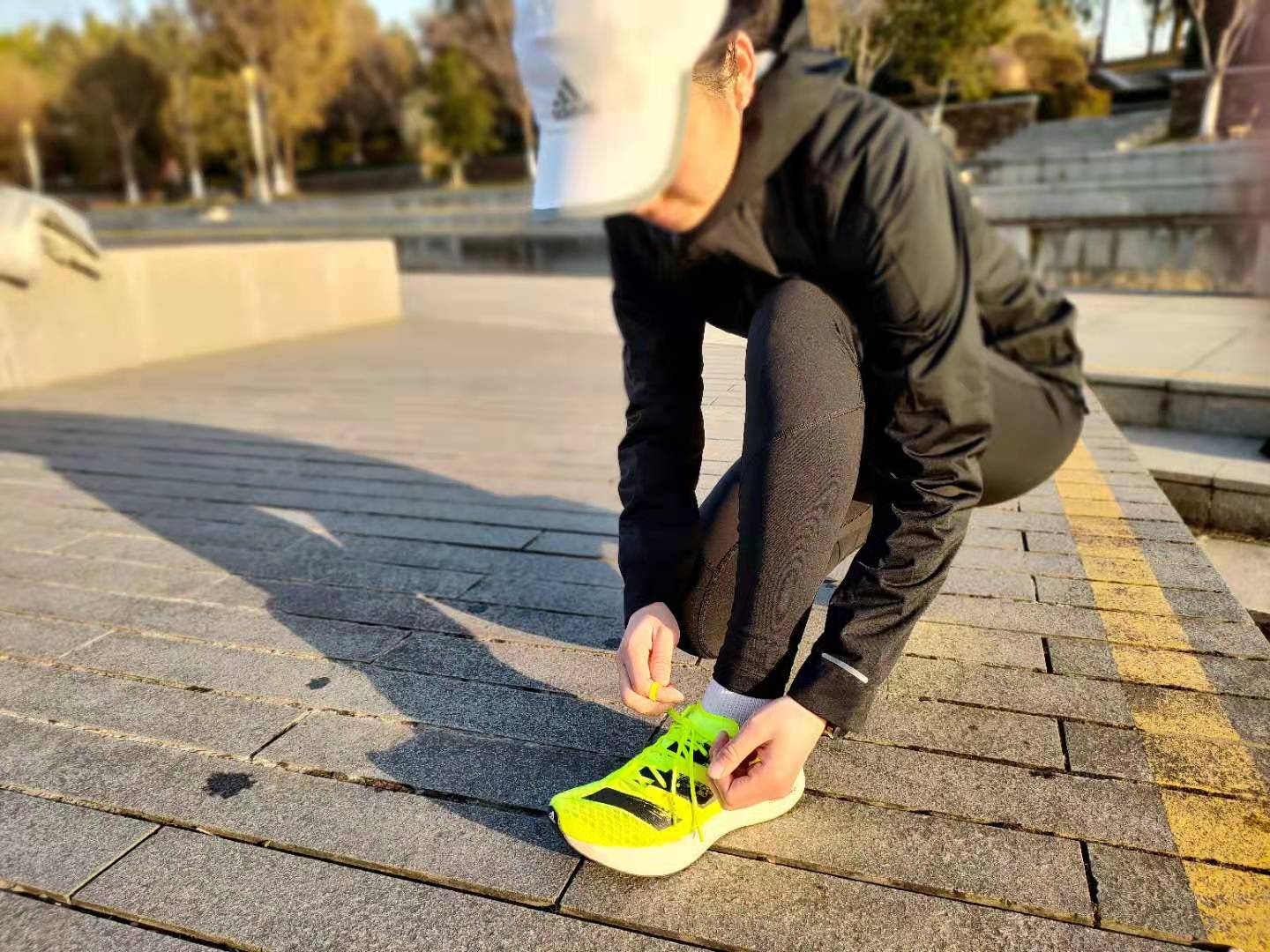
As Nike’s thick-soled carbon plate shoes represented by next% occupy a favorable position in major marathons, various brands have followed suit by using carbon plate as a focus in the development of racing shoes. Adidas adizero adios Pro is just a case in point.
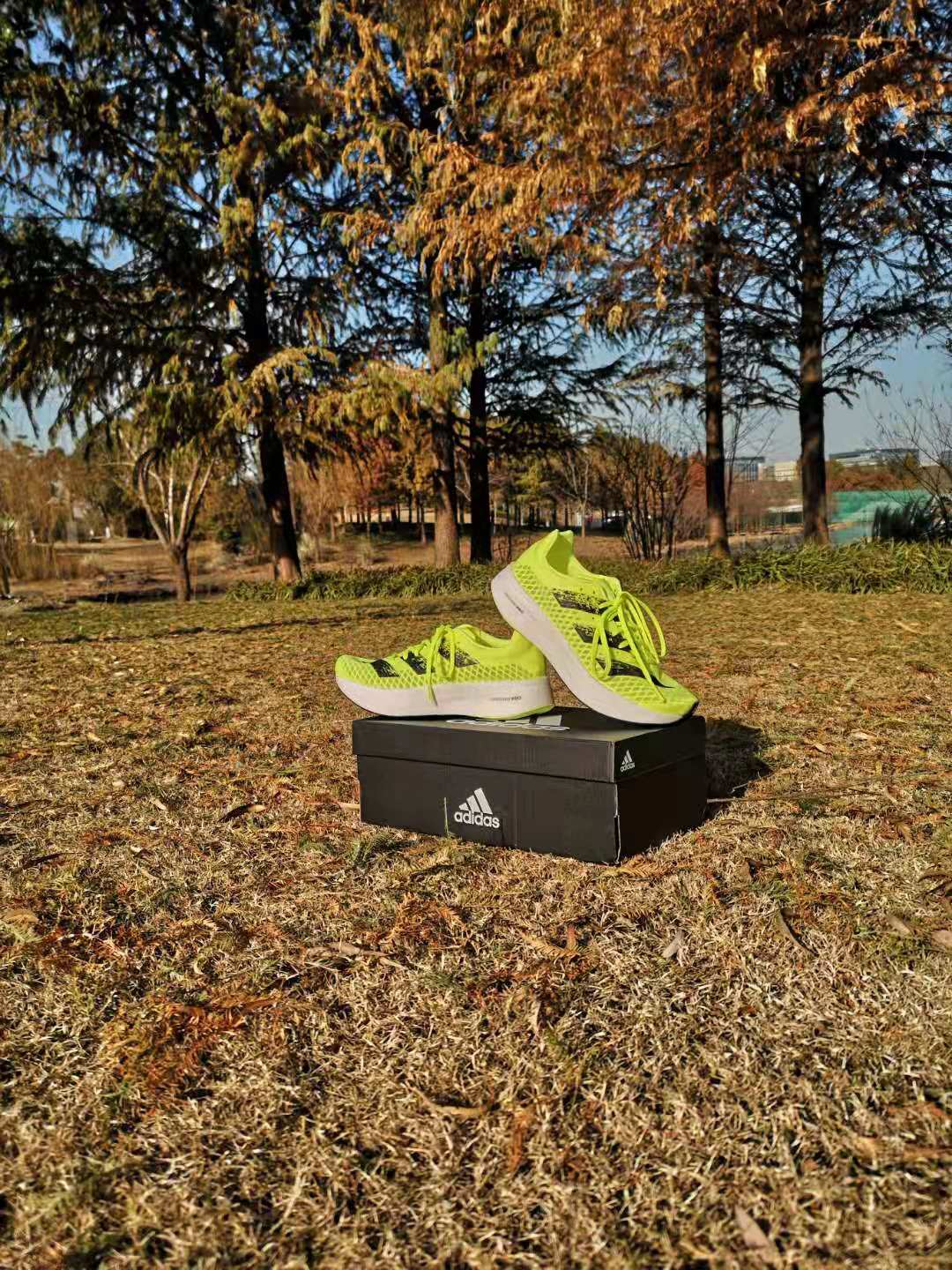
My adizero adios Pro is the eye-catching fluorescent yellow that seems to be more vibrant than the fluorescent pink. As for the design, there are obvious distinctions from the style of the past. For example, the three bars at the side have now spread to the middle of the vamp, appearing to be very obtrusive.
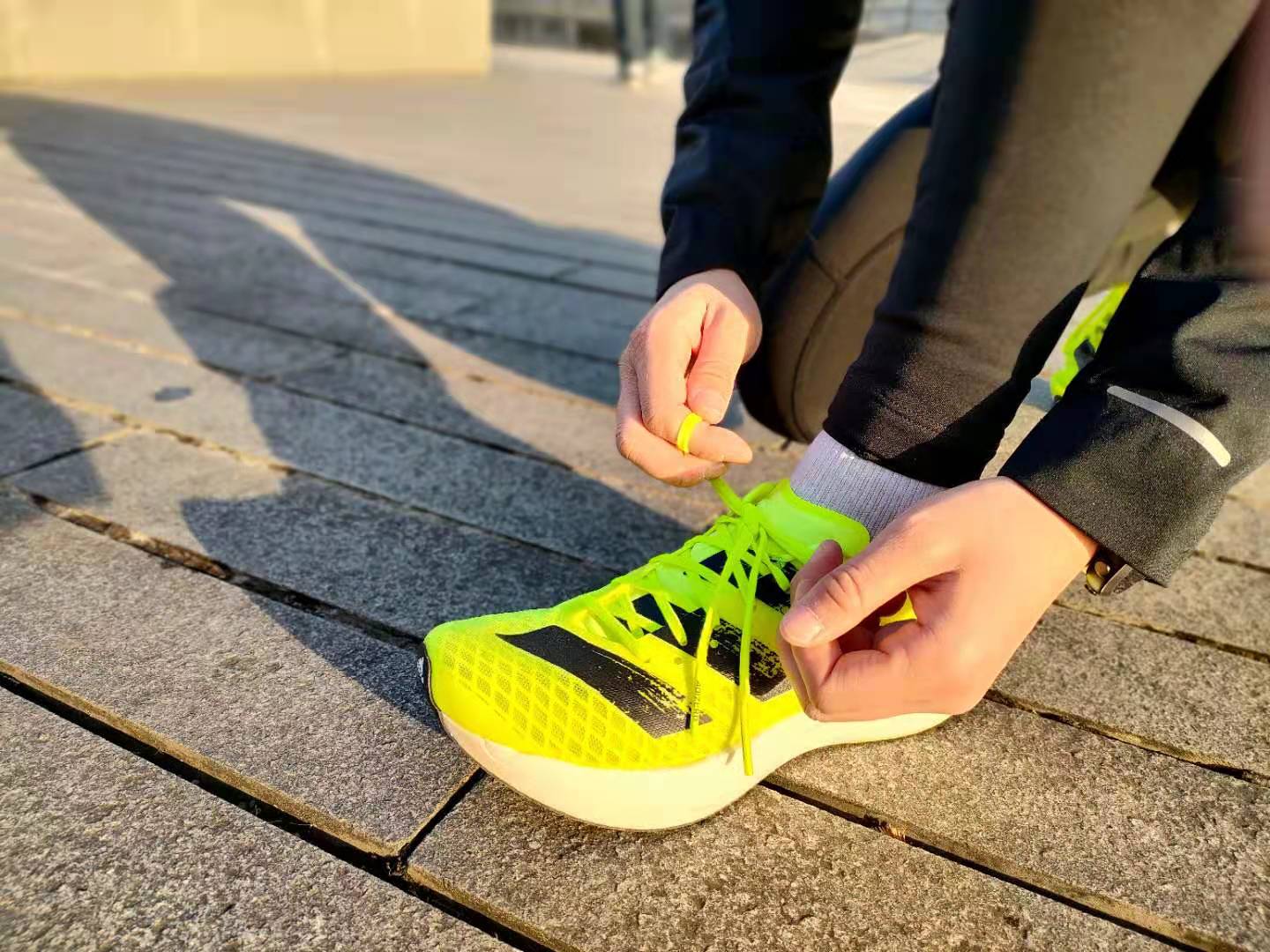
As for the materials, they are smartly chosen. The knitted mesh vamp is actually very thin and light, and the holes in it ensure excellent air permeability during exercises. In terms of the tongue, it is directly connected with the inner lining of both sides and the soles so that it won’t move to the sides during running.

Regarding the weight, a single shoe weighs 246 grams that is relatively light. The heel of the shoes is 39.6 mm thick while the forefoot is 29.6mm.

Previously I also experienced such shoes as adizero pro, boston 9 and adios 5, all of them being relatively hard in their soles and not that responsive in the cushions. Actually, they would be more suitable for runners with weak ankle strength and short distance races.
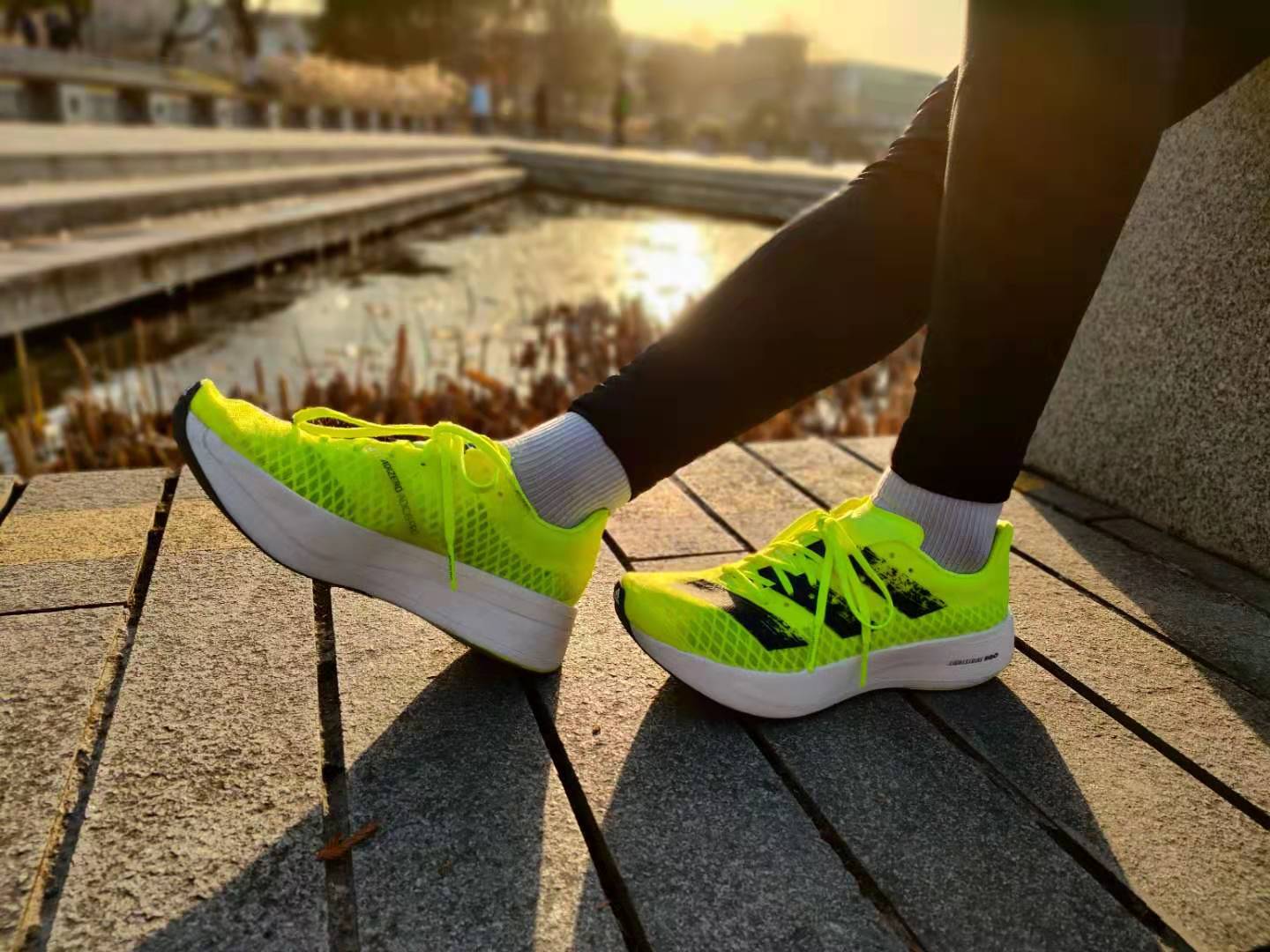
Adios pro looks similar to the almost-simultaneous-launched adizero pro, but the biggest difference between the two lies in the thickness of the soles. What’s more, adizero pro uses the traditional LIGHTSTRIKE BOOST hybrid midsole, while the Adios Pro uses the new LIGHTSTRIKE Pro which is lighter and more elastic. Therefore, despite some similarities, adios Pro has outweighed adizero pro in more ways than one.
Regarding the wrapping, it is also good. According to the feedback of quite a few consumers, the shoes fit their feet exactly right and many of them feel like they were wearing a pair of relatively hard “socks”.
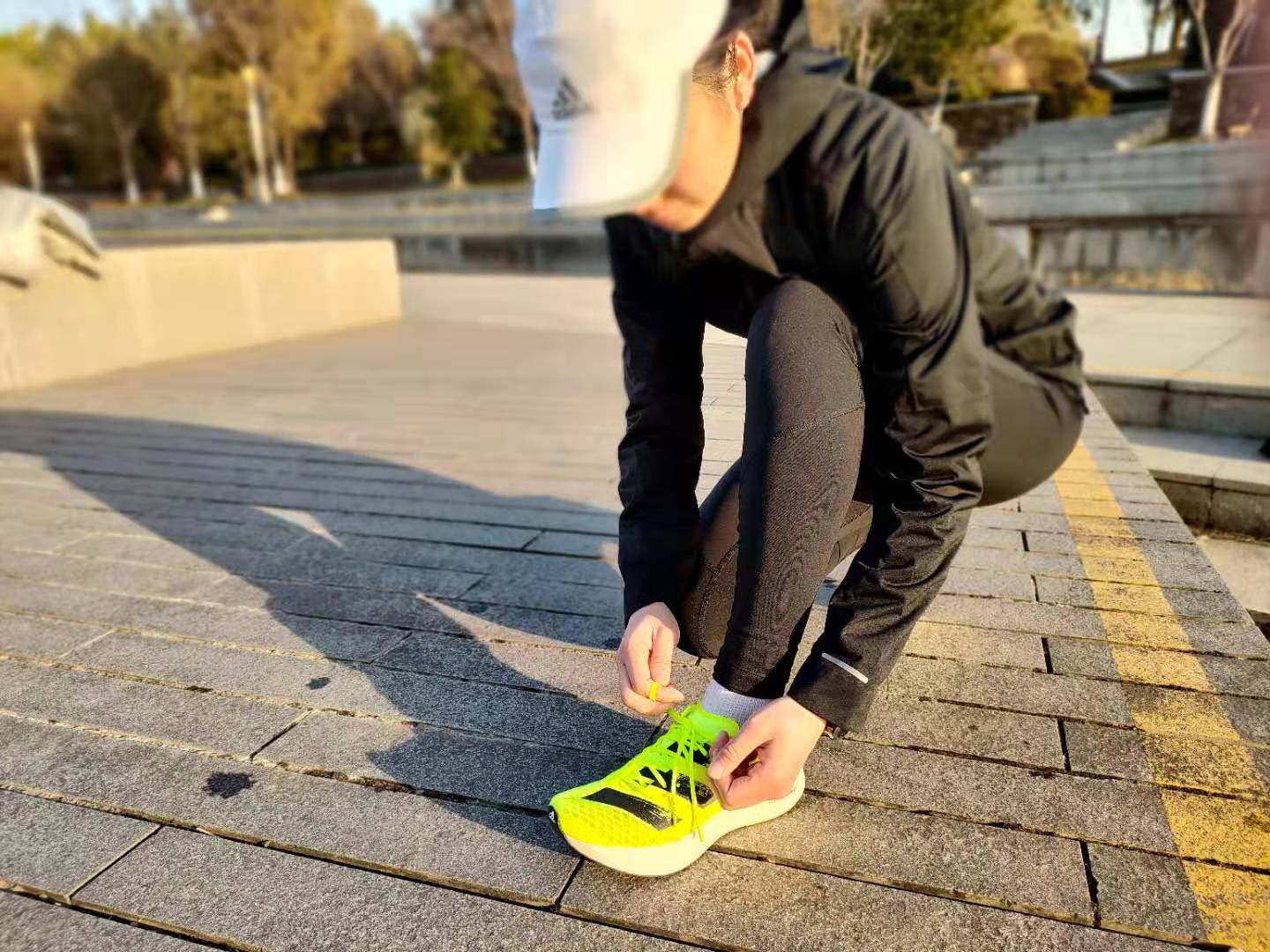
The half carbon plate in the heel seems to be born for runners who are used to landing on their heels. On the other hand, it also plays the role of anti-torsion and shock relieving. Different from the setup of Nike, the carbon plate of the forefoot adopts five carbon-fiber skeletons that not only reduce the shoes’ overall weight, but also offer sufficient support and propulsion force for runners.
The outsole of adios Pro is significantly different from those of the many shoes in the market in that the former is not equipped with any concave and convex patterns, but after my tests of the shoes, it turned out that its grip is no worse than the others, not least on plastic and asphalt roads. However, without the concave and convex patterns, the outsole is still inferior to other shoes in rainy days, which brings on another problem, poor wear resistance.

Its soles being thick, the shoe has prevailed over the thin-soled ones by saving energy consumption and relieving fatigue for runners especially when they are rather tired in the latter half of their running.
Overall:
As a pair of carbon plate shoes, adios Pro focuses more on helping improve runners’ speed and is relatively poor in supporting. Therefore, for those runners with weak ankle strength, it is recommended to think twice before buying thick-soled carbon plate shoes.